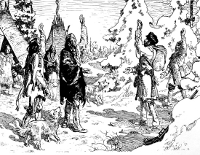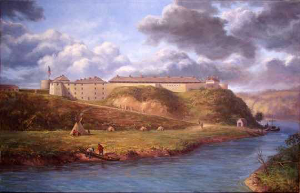The Making of the 50 States: Minnesota
Part 1: In the Beginning The early residents of what is now Minnesota build earthen mounds and carved images of animal and people into rocks. (Examples of the latter are preserved in the form of the Jeffers Petroglyphs.) 
Native Americans tribes who lived in the area included Chippewa (known as Anishinabe and Ojibwa) Cheyenne, Cree, Dakota Sioux, and Winnebago. French explorers Pierre Esprit Radisson and Medarad des Groseilliers visited the region; it was the trader Daniel Greysolon, Sieur Du Luth who claimed the region for France in 1679. The area was popular with explorers searching for the Northwest Passage. The French built Fort Beauharnois on Lake Pepin in 1721. U.S. ownership of what is now Minnesota came in three stages. The first stage was a transfer of ownership of the eastern part from Great Britain (who had owned it for only 20 years, starting with the end of the French and Indian War) after the Revolutionary War; the second stage was a transfer of ownership of the western part from France in the Louisiana Purchase; and the third stage was a transfer of the northern strip from Great Britain in 1818, in an arrangement that also set the border between Canada and the U.S. The American explorer Zebulon Pike arrived in Minnesota in 1805, on a search for the headwaters of the Mississippi River. He didn't find them, but he did sign a treaty with the Dakota for a land handover. A later explorer, Henry Schoolcraft, succeeded where Pike did not, at Lake Itasca. Other explorers who came later included Joseph Nicollet and John C. Fremont. 
After the 1825 construction of Fort Snelling at the confluence of the Minnesota River and the Mississippi River, American settlement accelerated; it really took off after the last remaining Native American tribes ceded their lands to the U.S. Next page > The Rest of the Story > Page 1, 2
|
|
Social Studies for Kids
copyright 2002–2024
David White




